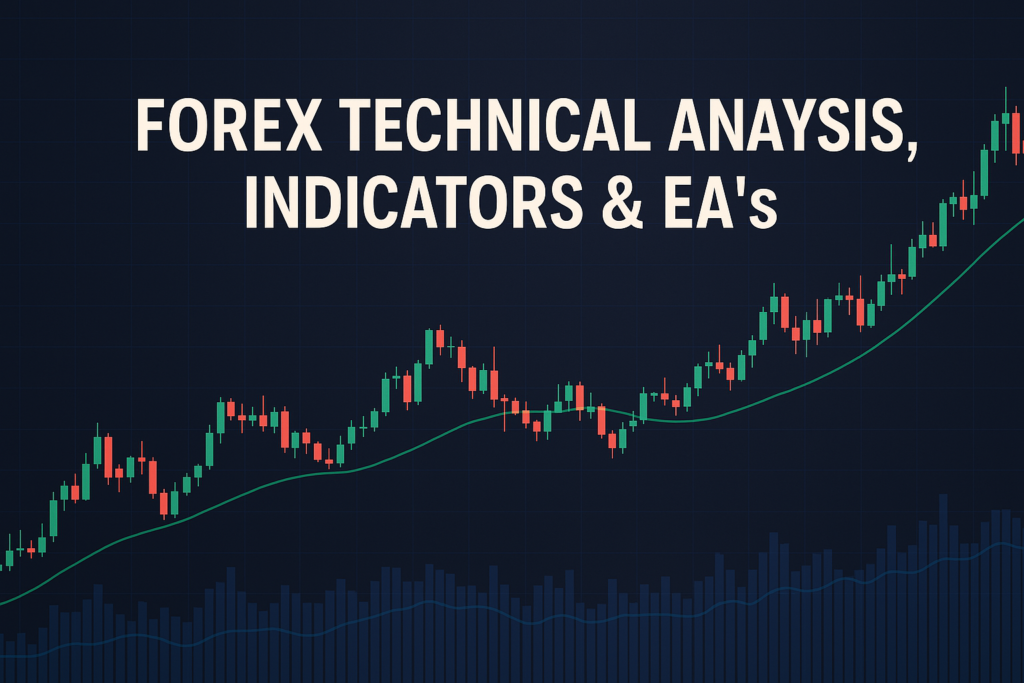
Guppy moving average helps Forex traders identify trends and make informed decisions for successful trading.
The guppy moving average is a unique tool in Forex trading. It helps traders spot trends and make informed decisions. By using multiple moving averages, it creates a clearer picture of price movements. This can be especially helpful in a fast-paced market like Forex.
However, many traders, both beginners and professionals, struggle with it. The various types and settings can be confusing. Additionally, understanding how and when to use it can be daunting. But mastering the guppy moving average is crucial for anyone looking to succeed in Forex trading.
This article will guide you through the guppy moving average, its history, advantages, disadvantages, and practical strategies to use it effectively.
If you’re interested in the USDCHF forecast April 18, 2025, you can find valuable insights there.
What is a Guppy Moving Average?
The guppy moving average (GMA) is a tool that helps traders understand price trends. In simple terms, it uses a series of moving averages to show the direction of the market. Imagine you want to know if the price of a currency pair is going up or down. The guppy moving average can help you see that clearly.
Types of Guppy Moving Average
There are different types of moving averages, and the guppy moving average combines them. Here are a few common types:
- Simple Moving Average (SMA): This averages prices over a set period.
- Exponential Moving Average (EMA): This gives more weight to recent prices, making it more responsive.
- Weighted Moving Average (WMA): Similar to EMA but uses a different weighting system.
How Guppy Moving Average Smooths Out Price Action
The guppy moving average smooths out the price action by averaging the prices over time. This makes it easier to see trends without the noise of daily price changes. Imagine you’re trying to listen to a conversation in a crowded room. The guppy moving average helps you focus on the important parts of the market.
Common Periods Used and Why
Traders often use specific periods for the guppy moving average. Common periods include 5, 10, 15, and 30 days. The choice of period depends on the trader’s strategy. Shorter periods react quickly to price changes, while longer periods provide a broader view of trends.
The History of Guppy Moving Average: How It Became Popular
Origin of Guppy Moving Average
The guppy moving average was created by Australian trader Daryl Guppy. He developed this tool to help traders understand market trends better. His method gained popularity due to its unique approach to using multiple moving averages.
When Did Traders Start Using It Widely?
Traders began to adopt the guppy moving average widely in the early 2000s. As online trading platforms became more accessible, more traders discovered its benefits. The guppy moving average quickly became a favorite among Forex traders seeking clarity in their trading decisions.
Real-Life Stories
Many professional traders have credited the guppy moving average for their success. For instance, one trader used it to identify a strong trend in the Euro. By entering early, he made significant profits as the price surged. Such success stories motivate many to learn and apply this method.
Advantages and Disadvantages of Guppy Moving Average
Advantages:
The guppy moving average comes with several advantages:
- Helps Identify Trends Easily: The multiple averages provide a clear picture of market direction.
- Useful for Dynamic Support and Resistance: It helps traders find potential reversal points.
- Works Well for Crossover Strategies: Traders can use crossovers for buy or sell signals.
Disadvantages:
However, the guppy moving average also has its drawbacks:
- Lagging Indicator: It often reacts slowly to sudden price movements.
- False Signals in Sideways Markets: It can give misleading signals during choppy market conditions.
How to Apply Guppy Moving Average on MT4 & MT5
Step-by-Step Guide to Adding Guppy Moving Average on Charts
To add the guppy moving average on your charts in MT4 or MT5, follow these steps:
- Open your trading platform.
- Select the currency pair you want to analyze.
- Click on the “Insert” tab, then “Indicators,” and select “Trend.”
- Choose “Moving Average” and set your parameters.
Customizing Guppy Moving Average Settings
You can customize the guppy moving average settings to fit your style. Adjust the periods, colors, and types of moving averages. For example, you might want a 5-day EMA in blue and a 10-day SMA in red. This helps you see the trends clearly.
Saving Templates for Easy Application
Once you set up your guppy moving average, save it as a template. This way, you can apply it easily to new charts. Just right-click on the chart, select “Template,” and then “Save Template.” Name it something memorable, like “Guppy Moving Average.”
5 to 7 Trading Strategies Using Only Guppy Moving Average
All Time Frame Strategy (M5 to D1)
This strategy works on any time frame, from M5 to D1. It focuses on identifying trends using the guppy moving average. For a buy signal, look for the short-term averages to cross above the long-term averages. Conversely, sell when they cross below.
Trending Strategies
In trending markets, the guppy moving average can be a powerful ally. When the price is above the moving averages, it’s a sign to look for buying opportunities. If it’s below, consider selling. Always wait for confirmation before entering a trade.
Counter Trade Strategies
For counter-trend trading, look for divergence between price and the guppy moving average. If the price is making new lows, but the moving average isn’t, it might signal a reversal. This strategy requires good risk management as it can be risky.
Swing Trade Strategies
Swing traders can use the guppy moving average to identify potential reversal points. When the price approaches a moving average and shows signs of bouncing back, it could be a good entry point for a trade. Always set stop-loss orders to protect your capital.
5 to 7 Trading Strategies Combining Guppy Moving Average with Other Indicators
All Time Frame Strategy (M5 to D1)
Combine the guppy moving average with the Relative Strength Index (RSI). When the RSI indicates oversold conditions and the price is above the moving averages, it could be a strong buy signal. The reverse applies for sell signals.
Trending Strategies
In trending markets, use the guppy moving average alongside MACD. When the MACD line crosses above the signal line and the price is above the moving averages, it’s a strong buy signal. Always wait for confirmation.
Counter Trade Strategies
Using the guppy moving average with Bollinger Bands can enhance counter-trend strategies. If the price touches the upper band and the moving averages are diverging, it may indicate a potential reversal.
Swing Trade Strategies
Combine the guppy moving average with Fibonacci retracement levels. If the price retraces to a Fibonacci level and the moving average holds, it may present a good buying opportunity.
If you’re curious about trading fees, check out what is a spread forex for more insights on costs involved in trading.
Top 10 FAQs About Guppy Moving Average
1. What is the Guppy Moving Average?
The guppy moving average is a tool that uses multiple moving averages to help traders identify market trends.
2. Why is it called the Guppy Moving Average?
It’s named after its creator, Daryl Guppy, who developed this method to improve trading decisions.
3. How is it different from other moving averages?
The guppy moving average uses multiple averages simultaneously, providing a broader view of market trends.
4. What time frames are best for using it?
It can be used across all time frames, but traders often prefer M5 to D1 depending on their strategy.
5. What are its main advantages?
It helps identify trends easily, provides dynamic support and resistance, and works well for crossover strategies.
6. What are its disadvantages?
It lags behind price movements and can produce false signals in sideways markets.
7. Can beginners use it?
Yes, beginners can use it with some practice and understanding of its mechanics.
8. How do I add it to my trading platform?
You can easily add it through the indicators menu in MT4 or MT5, following simple steps.
9. Are there specific settings I should use?
The settings depend on your strategy, but common choices are 5, 10, and 30-day periods.
10. How can I improve my trading with it?
Practice using it in demo accounts and combine it with other indicators for better results.
Conclusion
In conclusion, the guppy moving average is a powerful tool for Forex traders. Understanding it can help you identify trends and make informed decisions. Remember to combine it with other indicators for better accuracy. Always test your strategies before using real money.
So dive into trading with the guppy moving average, practice, and watch your skills improve. Happy trading!
Want to level up your trading skills? Check out trusted insights from Trading Point (XM), Federal Reserve
Expand Your Knowledge
- 📌 Forex Trading Learning Road Map
- 📌 Forex Trading Course with no Fees
- 📌 Forex Trading Issues, Problems, and Solutions
- 📌 Forex Daily Forecast & Live Updates
- 📌 Forex Fundamental & News Analysis: Tomorrow’s Market Movers & Trade Opportunities
- 📌 Forex Education Hub: Learn & Profit
- 📌 Forex Technical Analysis, Indicators & EA’s
Start Trading Today
Ready to take your forex trading to the next level? Open an account with Exness, one of the most trusted platforms in the industry. 👉 Sign Up Now and trade with confidence!
My recommended broker stands out with ultra-low spreads for beginners, instant withdrawals, and zero spread accounts for pro traders.
Trusted since 2008, lightning-fast execution, no hidden fees, and a secure, transparent trading environment—giving you the edge you need to succeed. 🚀
YouTube Video Library: Related Videos
Note: The video above is embedded from YouTube and is the property of its original creator. We do not own or take responsibility for the content or opinions expressed in the video.



